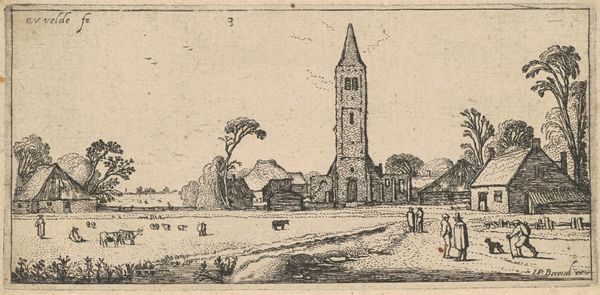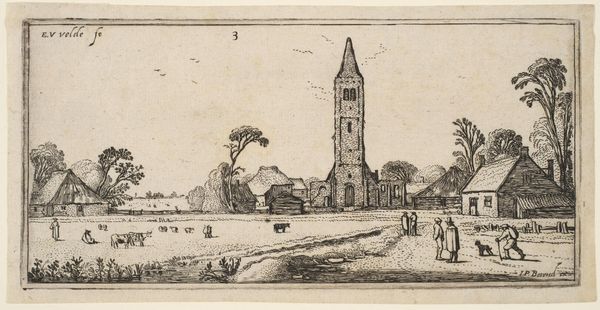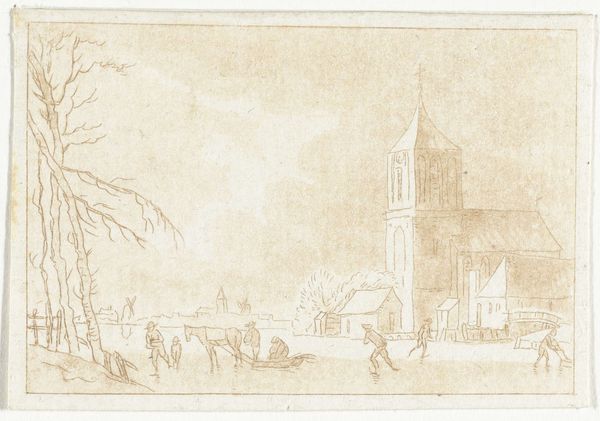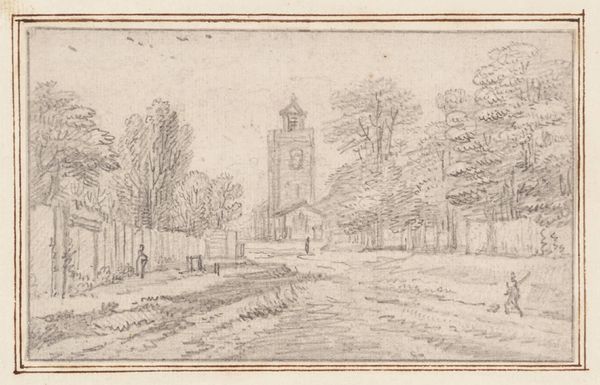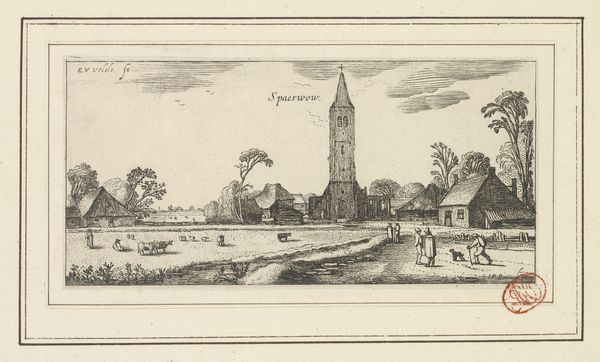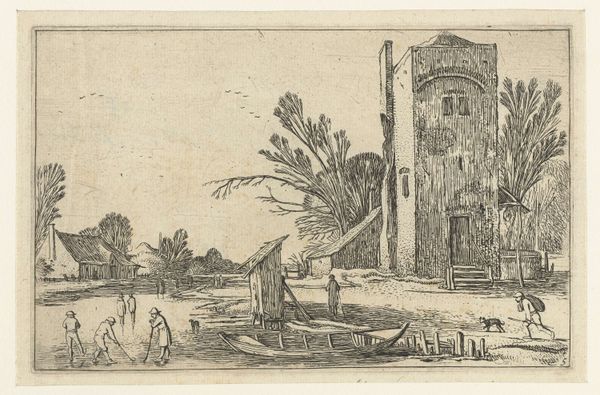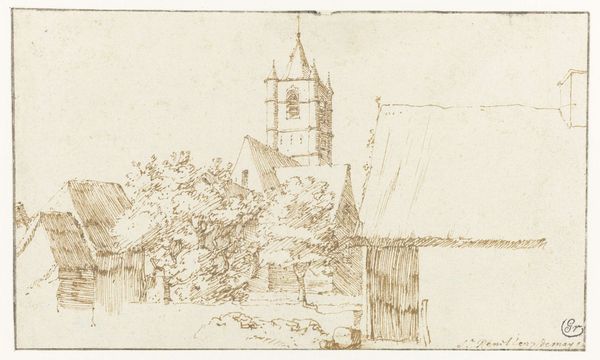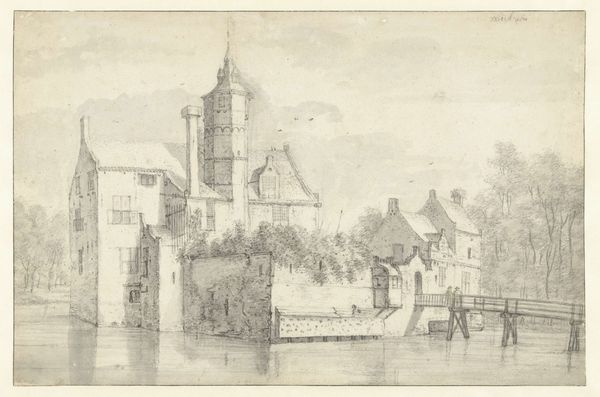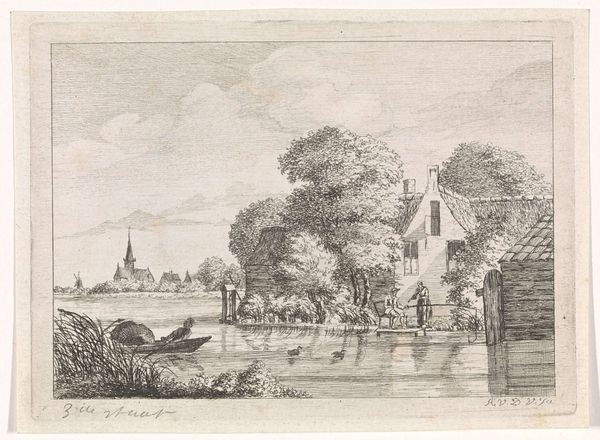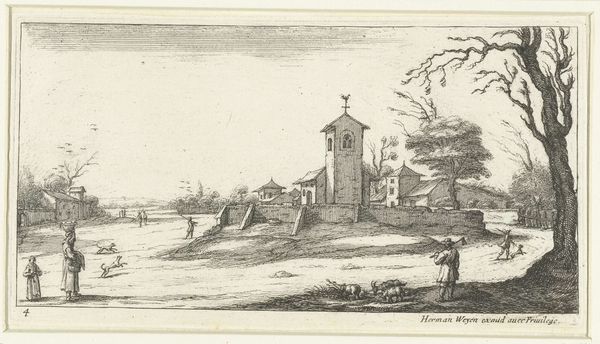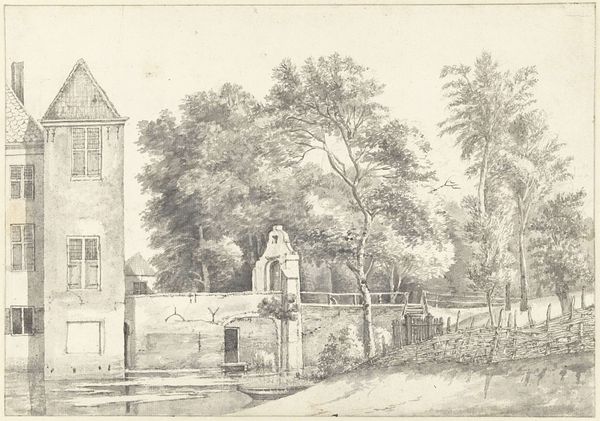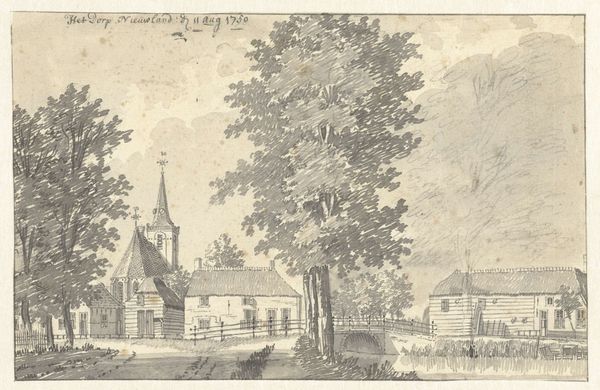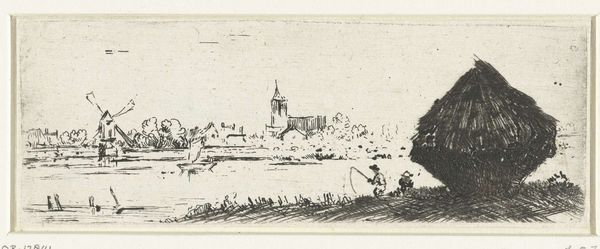
drawing, ink
#
drawing
#
baroque
#
dutch-golden-age
#
landscape
#
ink
#
watercolor
Dimensions: height 87 mm, width 178 mm
Copyright: Rijks Museum: Open Domain
Editor: Esaias van de Velde’s “View of Spaarnwoude,” created sometime between 1610 and 1615, is a beautiful, delicate ink drawing. There’s such a feeling of serenity looking at it. What strikes you most when you view this landscape? Curator: For me, the enduring power of this drawing resides in its symbolic language. Notice how the church steeple dominates the scene. In Dutch Golden Age landscapes, the church often represents not just spiritual life, but also communal identity and stability in a relatively new republic. It speaks to a sense of shared values. Editor: So, the church isn’t just a building; it's a representation of their society? Curator: Exactly. And consider the figures in the foreground. They are rendered quite small against the vastness of the landscape. What does that suggest about the individual's place in the world? The viewer's perhaps? Editor: Hmm, perhaps a sense of humanity's connection to the natural world? It also creates an immense sense of scale. Curator: Precisely! Van de Velde uses that contrast to highlight the relationship between human activity and the overarching forces of nature. The landscape becomes a stage upon which human dramas play out, but it existed long before those dramas, and shall remain. There’s also a psychological element at play: How do we define ourselves in relation to something far bigger? What do we find solace in? Editor: I hadn't considered the psychological angle before! That’s really fascinating. It definitely gives me a deeper appreciation for this drawing. Curator: Indeed. It makes you ponder the power of the natural world. I hope you leave here pondering what endures!
Comments
No comments
Be the first to comment and join the conversation on the ultimate creative platform.
